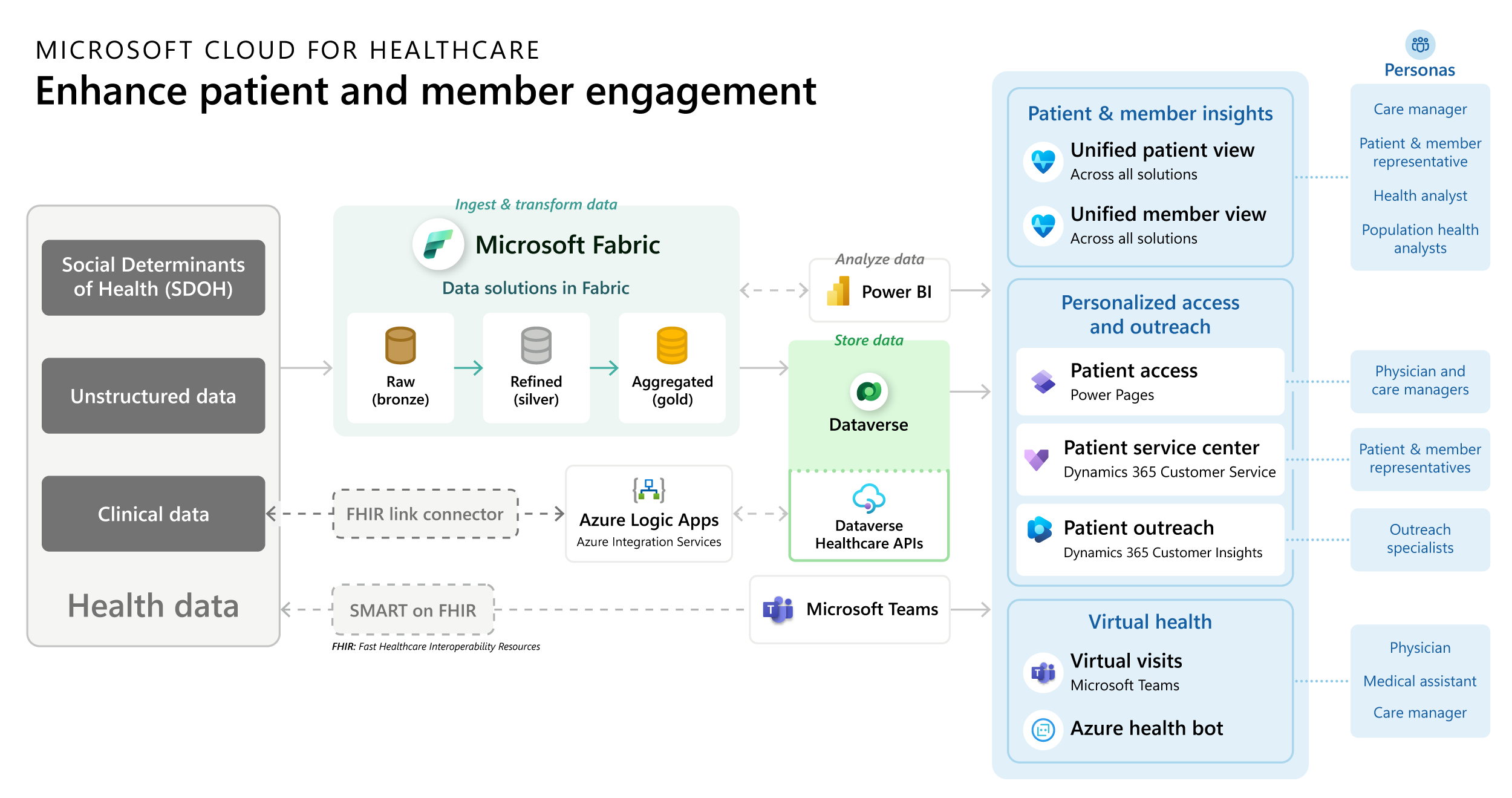Enhance patient and member engagement
Healthcare organizations want to continuously improve patient experiences and health outcomes by enabling enriched data flow through every point of care. Patient engagement refers to personalized care, virtual health, and patient insights, empowering patients with engagement tools and arming providers with insights to tailor every interaction.
To exchange health data, customers use Dataverse healthcare APIs, Azure Logic Apps, and Dataverse to ingest HL7© Fast Health Interoperability Resources (FHIR) based data into an operational store for business applications. After ingestion, the data is made available to healthcare solutions for taking action.
Healthcare organizations have a growing interest in using analytics and machine learning to optimize and automate operational processes.
Download a printable PDF of this reference architecture diagram.
Personalized access and outreach
Personalized access and outreach provide access for patients to their health data, knowledge articles, and appointment scheduling.
Healthcare organizations use Patient service center to engage with patients through chat and other channels.
Patient outreach provides segmentation for running engagement campaigns.
Unified patient view consolidates data from multiple medical records and shows clinical, demographic, care plan, and clinical timeline information in all Microsoft Cloud for Healthcare solutions.
These applications use the data available in Dataverse as described in Characteristics of healthcare data.
Patient and member insights
Using data from disparate systems to develop a comprehensive view of each patient is the first step towards unlocking actionable insights to help tailor care.
Unified patient view enables customers and partners to create custom solutions or extend the capabilities of Microsoft Cloud for Healthcare solutions.
Unified member view provides healthcare payors and insurers a single place to aggregate, access, and utilize different types of member data.
Virtual health
Virtual health helps patients connect with care teams and virtual health bots on a secure collaboration platform to expand engagement and care delivery across remote locations. Microsoft Teams allows organizations with a simple way to schedule and manage virtual appointments for staff and attendees.
Azure AI Health Bot allows patients to schedule appointments easily and securely using text or voice in a self-service manner. Natural language processing (NLP) understands the patient’s intent and has a built-in medical database, including triage protocols.
